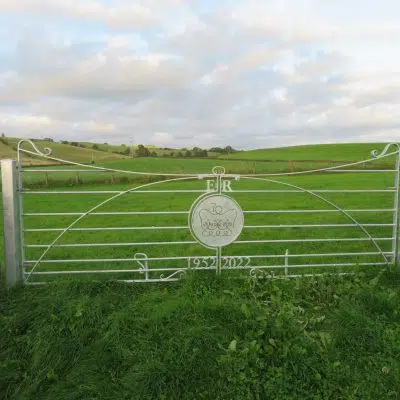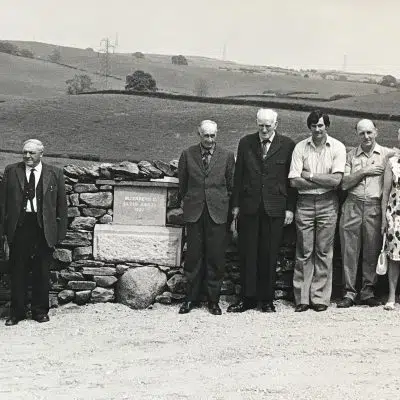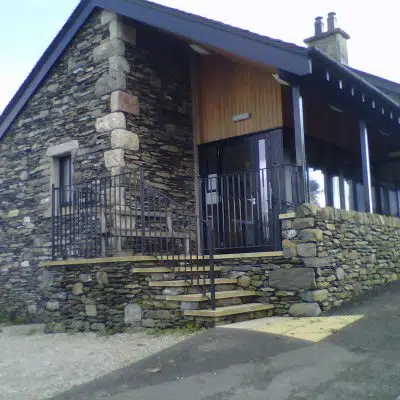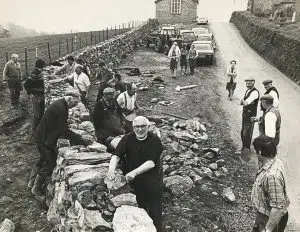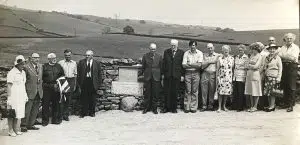About Us
The hall is a charity (1098387). It is managed on a day to day basis by a committee made up of unpaid volunteers appointed annually in accordance with the Trust deed, some being elected and some nominated by the parish council and local groups.
Trustee/Committee Members for 2022-3
Annual General Meeting Minutes
The Hall History
From 1897 to now...
A church was built in 1871 for the newly created parish of Skelsmergh, Scalthwaiterigg and Patton. A vicarage was added in 1875 with a ‘Parish Room’ in its basement accessed from steps in the corner of the churchyard. The energetic first vicar, George Reade, decided that better accommodation was necessary so a committee to build a new ‘room’ was set up in 1892. This was far sighted – village halls were rare before the First World War. Reade left in 1895 but by then he had persuaded the trustees of the Dallam Tower estate to give land opposite the church and had raised over £250. The land was conveyed for religious, educational and charitable activities and purposes that in the vicar’s opinion might meet the ‘moral or social wants’ of the population. The hall was constructed opposite the church in 1897 for £297 by three builders who tendered: Nelsons of Stocks Mill, Storey of Garth Row and William Jackson of Kendal. The stone for the walls seems to have come from the quarry on Skelsmergh Fell and incorporated a datestone for Queen Victoria’s Diamond Jubilee of that year.
Since 1897 the hall has answered to a lot of names. In its early days, as well as the Parish Room, it was also called St John’s Parish Room, the Mission Room or Church Hall. Later, more secular descriptions such as Parish Hall, the Village Institute, Village Hall and finally Community Hall have replaced these. It was used for all the activities typical of church and parish halls in the 20th century with regular meetings by Skelsmergh Parish Council, the Church Parochial Council, Skelsmergh Mother’s Union, the Skelsmergh scouts, Girl’s Friendly Society, Lads Club and Skelsmergh W I as well as talks, dances and other leisure activities.
In 1931 the executors of Harry Howson, who had bought the Skelsmergh Hall estate, sold a small patch of land behind and below the hall to the vicar for £15 so that it could be expanded. In 1937 – the coronation year for King George VI – the end wall of the hall was taken down, the building extended twenty-one feet and a water supply was connected.
Until 1938 the Skelsmergh vicar and the Parochial Church Council were responsible for the hall but Cecil Gibbons, appointed in 1940, was also vicar of Selside and in 1947 he set up and chaired a hall ‘Users Committee’. There were representatives from the PCC, Parish Council, Mothers Union, Women’s Institute, the Social Club, the Tennis Club, the Badminton Club, the Girls Friendly Society, the Sports Committee, and two churchwardens. In addition to the activities of these groups, there were weekly dances, whist drives, the Conservative Party held regular meetings, there were evening classes and it was used for church activities such as Sunday school, bible and confirmation classes. The hall was in demand and diverse social activities were centred on it at this time.
The Users Committee continued until 1969 but from the mid 1950s things became more difficult. The redrawing of parish boundaries in 1959 reduced church income and the vicar’s responsibilities now included Longsleddale. Changing expectations, travel and leisure patterns were lessening demand for the hall and necessary repairs sometimes only happened because committee members had made loans. Nevertheless, the place remained a church and social hub and improvements were made at intervals. In 1977 Rev. Philip Rumsey negotiated an exchange of the land at the back of the Hall with an equivalent piece of Mr Taylor’s Skelsmergh Hall land at the side of road to create a car park. Local farmers brought stone and built a retaining wall incorporating a Silver Jubilee datestone and two oak trees were planted at the lower end. Upgrading continued under Rumsey’s successor, Lawrie Peat, with a fund-raising appeal in 1982. More than £7000 was spent and the kitchen was enlarged, separate indoor toilets built and a new safer entrance made towards the car park. Local volunteers worked on the rewiring and repainting.
The Hall had not been built with the expectation that it would make a profit and often required subsidies from church funds. Vicars varied in how pro-active they were but the facility had relied on their leadership and their ability to mobilise wider local support. Church ownership had thus co-existed with a growing sense of it being a community resource. Bob Dew – the last vicar of Skelsmergh – was not just responsible for three parishes but part time. By the 1990s an aging congregation, lower hall usage and the need to make improvements pointed to the need for change. A detailed review was carried out by Roger Woods for the PCC. He made comparisons with other local village halls and suggested desirable improvements and how things might be differently organised but reached negative conclusions about the capacity of the church council to continue subsidising it or to spearhead change. It was commented that even if it was true that every village needs a village hall, it might not be true that our village wanted one.
In 1994 Bob was able to procure grants to remove the open fireplaces and install new electric heating. Better second-hand furniture was sourced and more than twenty local people redecorated the hall. He also convened open meetings in 1995 to try to encourage greater use but they had little impact and by 2001 more radical action was explored. Estate agents were contacted to ascertain the value of the site and the idea of adapting the church for dual use by church and community was floated.
Faced with the prospect of the hall being sold, there was a change of local mood. A meeting of thirty people at the hall in October 2001 voted almost unanimously to retain the hall and against selling. Mealbank Estates offered support with the running costs and ten people volunteered to serve on a committee. The hall was leased for 28 years to a new charitable trust in 2002. A Management Committee was set up of elected members and users such as the Toddler Group and Sports Committee with the vicar, PCC and parish council representatives and three co-opted members. Charitable status allowed greater access to grants and with an active committee many more social and fundraising events were put on. The electrics were upgraded, a survey distributed to local households received a high response rate and in 2003 an area of land behind the hall was leased from the Stephenson Trust.
A major focus was to extend and upgrade the hall. Over seven years £250,000 was raised through fund-raising events and successful grant applications for Lottery funding and to other charities. A high-quality extension was built with new toilet and washroom facilities and disabled access. The hall flooring was replaced and underfloor heating by ground source heat pump transformed the feel of the place. Double glazing was installed and large French windows opening onto a balcony with wooden decking and steps to access the rear field. Part of the land at the rear was purchased from the Stephenson Trust in 2012 and in the same year the kitchen was refurbished. In 2015 photovoltaic panels were installed on the southern roof. More recently the hall has been connected to the B4RN network so it has a good internet link and an AV system with projector and drop-down screen has been added.
Over the last 125 years many local people have made huge commitments of unpaid time and service to use, preserve and improve this facility through changing times. In an area where there is no concentration of local buildings to provide a village hub this community facility provides an easy meeting point for inhabitants of the parishes north of Kendal as well as a venue for events from the wider area.
